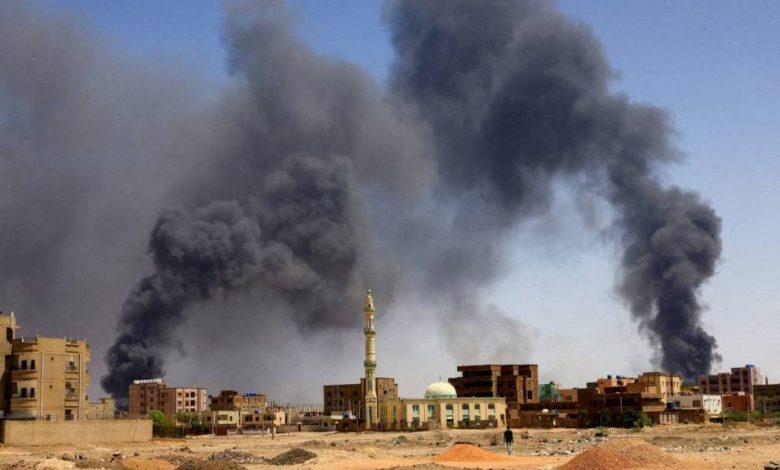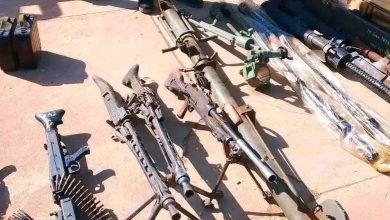Reports
Le Monde: Death Strikes Every Corner of War-Torn Khartoum

Sudan Events – Agencies
The war in Sudan has reached a new and possibly its most dangerous phase in 18 months, leaving no option but a battle to total victory. The Sudanese army has declared it is prepared to fight for “a hundred years,” while the militias are reportedly ready to assemble an army of “one million men.”
This summary begins the first in a series of eight reports by Le Monde, which dispatched correspondents amid the rubble in central Khartoum to shed light on the ongoing conflict between Sudan’s regular army and the Rapid Support Forces (RSF). The conflict has caused over 150,000 civilian deaths and sparked what is now considered one of the world’s most severe humanitarian crises.
In a report by Elliot Brachet, the publication starts from Ahmed Sharafi Cemetery in the heart of Omdurman, near Khartoum, where graves stretch as far as the eye can see. Grave diggers work tirelessly along a wall in an area once used for local youth soccer matches, now filled with the graves of those lost in the past 18 months of war.
The report describes the arrival of Mohamed Adam’s body after he was struck by a shell while resting on a bed in his yard, as his daughter Iman was preparing him coffee. Iman and a neighbor, Osama, gathered his remains, and two hours later, a small group of men carried his shrouded body to his final resting place, without washing it due to its condition.
According to Le Monde, October was one of the deadliest months for Sudanese civilians since the war began. In Khartoum, paramilitary forces bombarded areas under the control of regular army forces, and daily shells hit homes, sports fields, and schools sheltering displaced people. Meanwhile, Sudanese armed forces intensified their aerial attacks on militia positions, leading to dozens of civilian deaths.
The Deadly Dance
Over four weeks, more than 700 civilians have reportedly died, though there is no reliable data in Sudan, with the United Nations reporting a death toll around 20,000. However, Le Monde estimates over 150,000 civilian deaths from bombings, massacres, and fatalities due to starvation and disease.
After Mohamed Adam’s remains were lowered into the cold, dark earth, mourners dispersed without fanfare, death having become a daily ritual. The dead are left to their silent world as the living resume their routines, while gravediggers, armed with shovels, dig more graves. Two families wait, having lost loved ones to a mortar shell near a gas station in Omdurman.
This cycle of funerals continues in what has become a deadly dance. Grave digger Abdeen Derma, who organizes 15 to 40 burials daily, explained, “We dig here from dawn until nightfall, burying civilians killed by explosions, stray bullets, soldiers, natural deaths, and epidemic victims.”
Throughout the country, especially in militia-controlled areas, most bodies never make it to hospitals or morgues. Instead, they are buried in parks, under trees, or by roadsides, some even consumed by dogs. Derma states, “In this chaos, bodies are buried where they fall to avoid decomposition. Counting the dead is impossible.”
Systematic Looting
As the conflict escalates, Khartoum appears ghostly to those near the front lines. Once the heart of the capital, now the historic neighborhoods of Omdurman lie in ruins. The once-thriving central market has become a heap of scorched bricks and charred fabric, while the famed gold market, once glittering with jewelry shops, is reduced to a line of burned rubble reeking of gunpowder and death.
General Hemedti’s forces, often called “Janjaweed,” are primarily recruited from Arab Bedouin tribes in western Sudan. In the early weeks, the RSF managed to control nearly the entire city. However, as months passed, they spiraled out of control, engaging in widespread looting across Sudan, particularly in the capital, where treasures like banks, factories, offices, and homes proved irresistible. According to Le Monde, everything of value was plundered.
Le Monde, which was only able to access army-controlled areas, gathered dozens of testimonies describing RSF militia breaking into homes, terrorizing entire families, assaulting women, and stealing valuables ranging from cars to jewelry. Some interpret these abuses as a form of revenge against the elite who have controlled power since Sudan’s independence in 1956.



